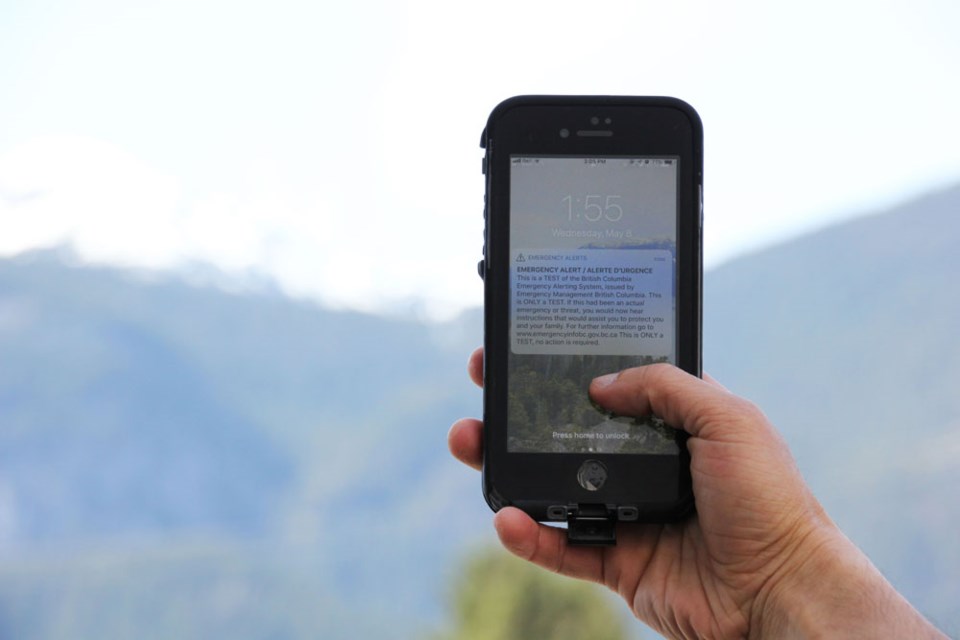On May 7, residents across Squamish were alerted to a demo of the emergency alert by text message, email or call on a landline.
But after the test, some Squamish residents raised concerns about how the phone call could come up to an hour later than the other alert methods.
In an email, District of Squamish communications manager Christina Moore wrote, “Phone calls take a little longer to receive due to the physical time it takes software to dial out all the phone numbers. There are multiple lines, but it takes a bit of time."
SLRD Alert and Squamish Nation Alert are also operated by the same software, by ePACT emergency network, covering the areas outside of the local municipalities and the Nation members in Squamish, North Vancouver, West Vancouver and off-reserve in the Lower Mainland.
“In an emergency, such as issuing an evacuation alert for flooding for example, a Squamish Alert message would be activated as soon as possible to compensate for the delayed phone call. If it was an emergency like an earthquake, the public will obviously not need Squamish Alert to tell them that it has happened, nor might we have the capabilities to send a message if networks are impacted,” Moore said. "It is still critically important for residents to be 72-hours prepared for an emergency, and preferably a week."
In a follow-up email, Moore said an advantage of the subscription service is, even with a delay, the wait is significantly shorter than it would take for a first responder to knock or to hear about an emergency from neighbours.
Residents are encouraged to subscribe. So far, the District said there are 3,194 subscriptions, which Moore added is approximately 7,300 households or 44 per cent of the population. Squamish's population is estimated at about 21,000.
The free service was launched in September 2016. A benefit of subscribing, Moore added, is that residents can respond with information about people they are with during an emergency, sharing how many people are present, and if any have allergies, medical needs or disabilities the district needs to know about in case of an evacuation.
At 1:55 pm on May 8, the provincial alert by Emergency Management BC was also tested across radio, TV and wireless devices connected to LTE. AlertReady is a national service that does not require a subscription, and is currently used in B.C. for potential tsunamis. RCMP can use it to issue AMBER Alerts.



